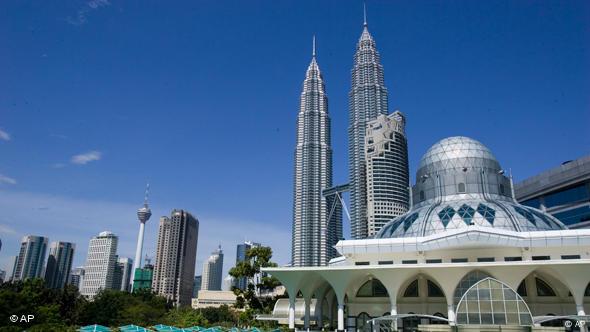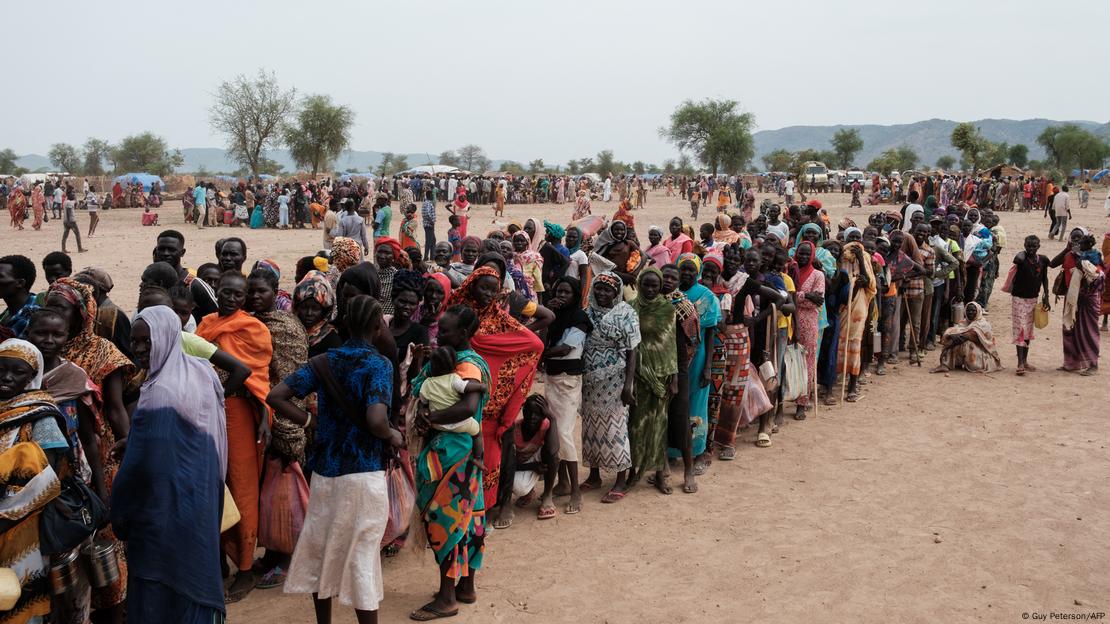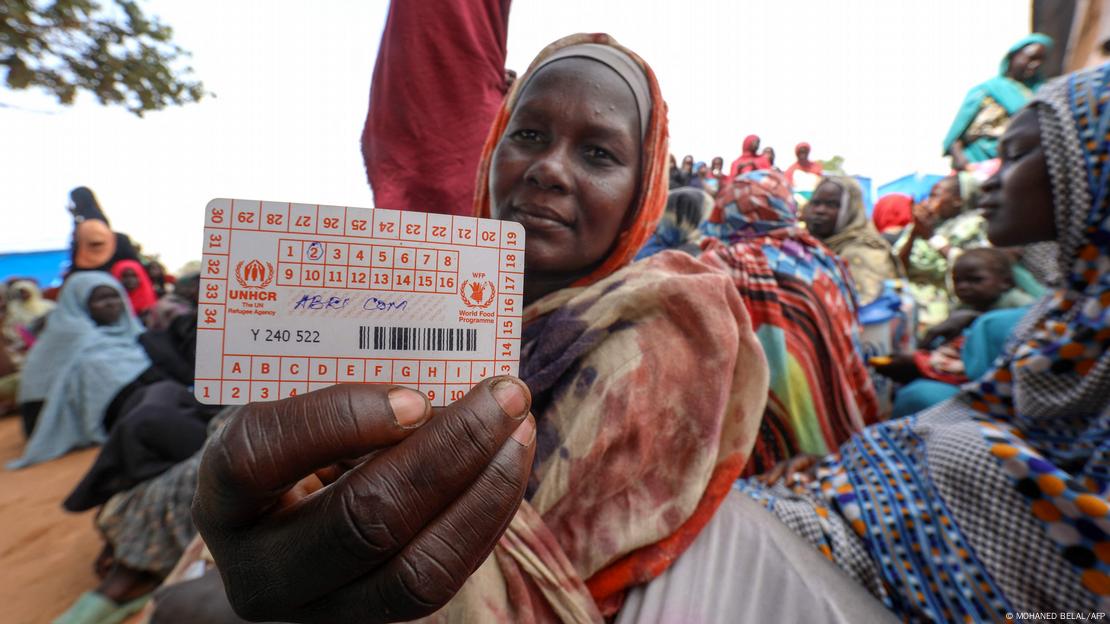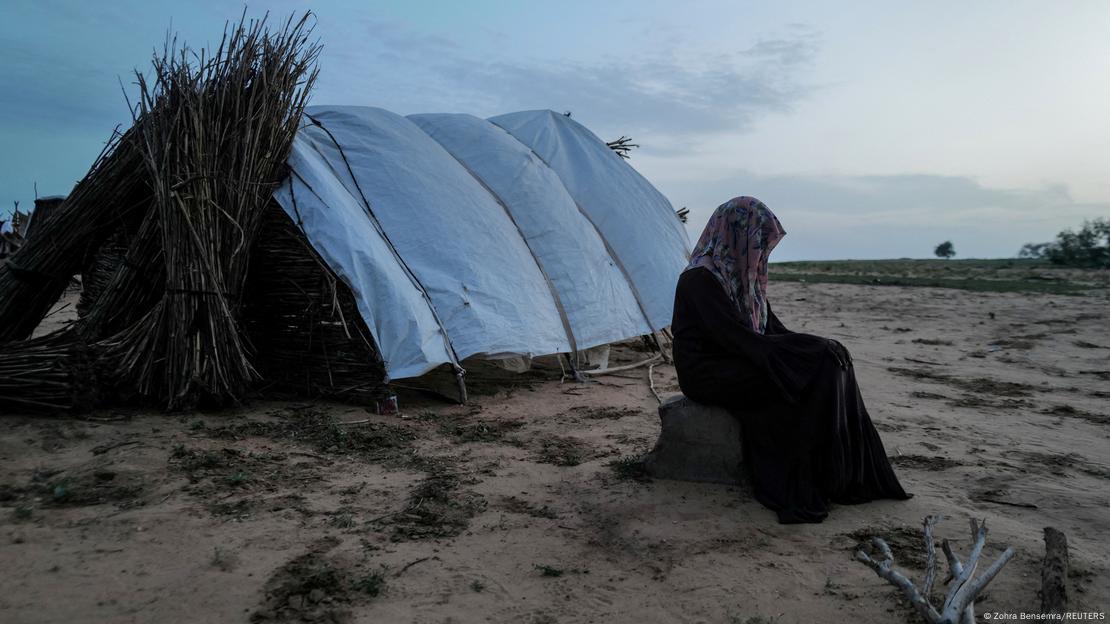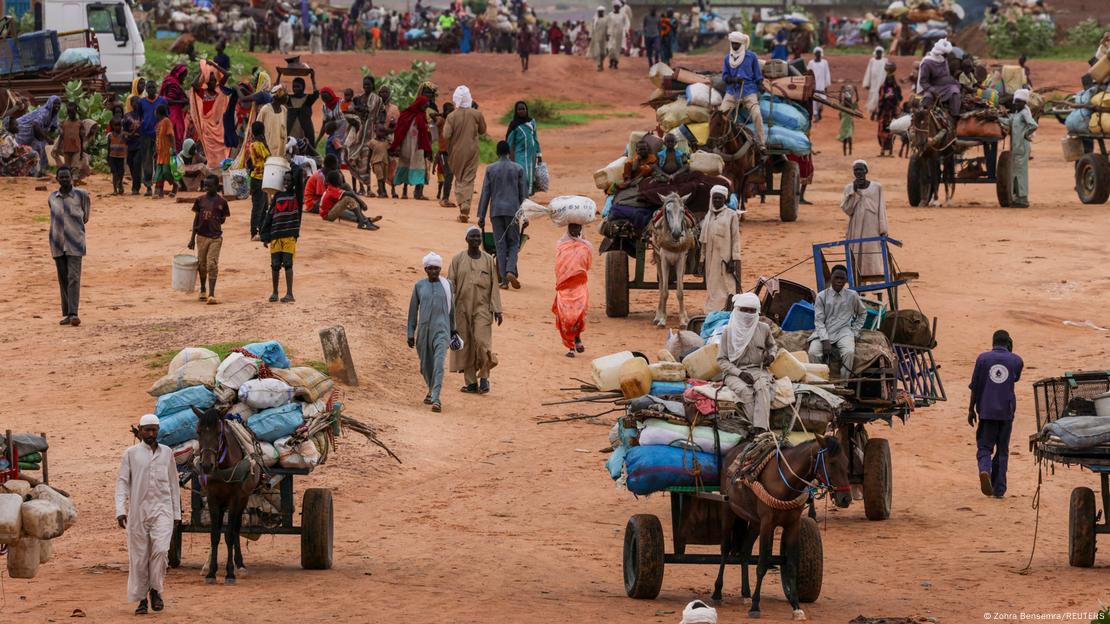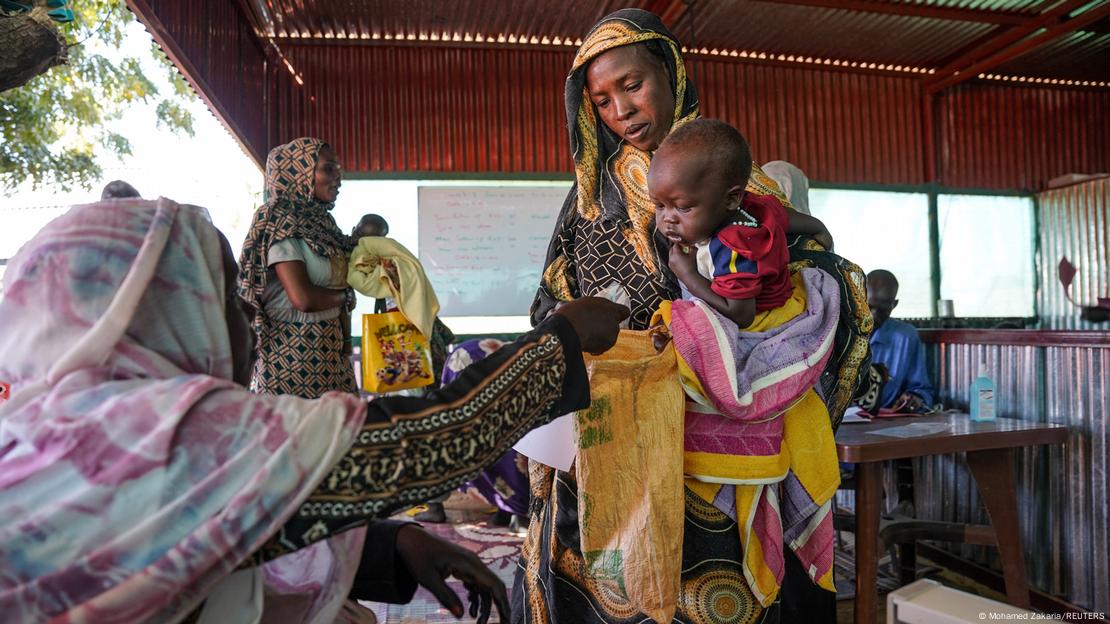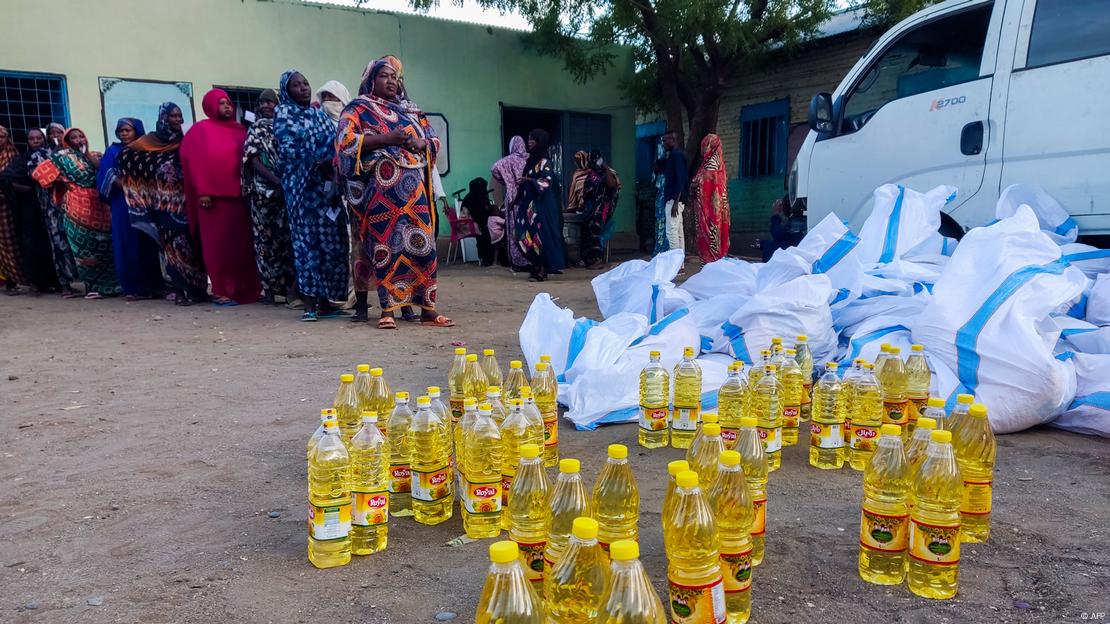Hurricane Beryl strikes Jamaica with widespread destruction
Grenada's PM has called the hurricane "Armageddon-like" as it wreaks havoc across the Caribbean with several people reported to have been killed.
The Caribbean island nation of Jamaica on Wednesday was facing the brunt of hurricane Beryl, classified as a powerful 'Category 4' storm. So far it has killed at least seven people, flattened numerous homes and destroyed crops on smaller islands as it has churned through the eastern Caribbean.
Wind-whipped rain pounded the island for hours as residents heeded authorities' call to shelter until the storm had passed.
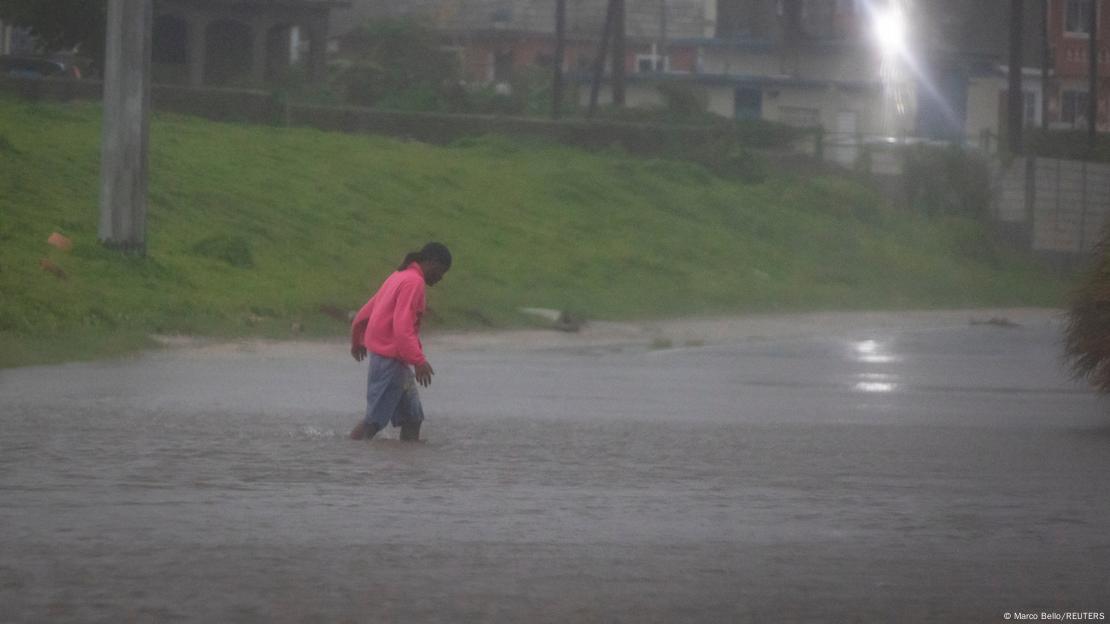
Mexico braces for storm
Mexico's Navy patrolled areas like Tulum telling tourists in Spanish and English to prepare for the storm's arrival.
As of late Wednesday, Beryl was forecasted to make landfall in a sparsely populated area of lagoons and mangroves south of Tulum in the early hours of Friday, likely as a weakened Category 2 storm.
That changed when it was expected to cross the Yucatan Peninsula and restrengthen over the warm waters of the Gulf of Mexico, making a second strike on Mexico's northeast coast near the Texas border.
"We will have intense rains and wind gusts" from Thursday, Civil Protection national coordinator Laura Velazquez said, announcing the deployment of hundreds of military personnel, marines and electricity workers in anticipation of damage.
Beryl's widespread destruction
"Beryl has also affected the Cayman Islands and is expected to spin up to even higher speeds by Wednesday night and Thursday," the NHC said in an advisory.
Local authorities have issued hurricane warnings as the rapidly moving hurricane has felled power lines and unleashed flash floods across smaller islands.
Haiti's capital Port-au-Prince — currently in the grip of gang violence and experiencing an ongoing humanitarian crisis — also saw strong winds on Tuesday afternoon.
The new Haitian Prime Minister Garry Conille has warned residents to take precautions and stay alert.
Grenada's PM has called the hurricane "Armageddon-like" as it wreaks havoc across the Caribbean with several people reported to have been killed.
Hurricane Beryl rips through Caribbean
Though slightly weakened, a destructive Hurricane Beryl is still on its way through the Caribbean and is now heading for Jamaica. Devastating winds and flooding have smashed houses and ships, killing at least six people
Though slightly weakened, a destructive Hurricane Beryl is still on its way through the Caribbean and is now heading for Jamaica. Devastating winds and flooding have smashed houses and ships, killing at least six people
.Image: Ricardo Mazalan/AP Photo/picture alliance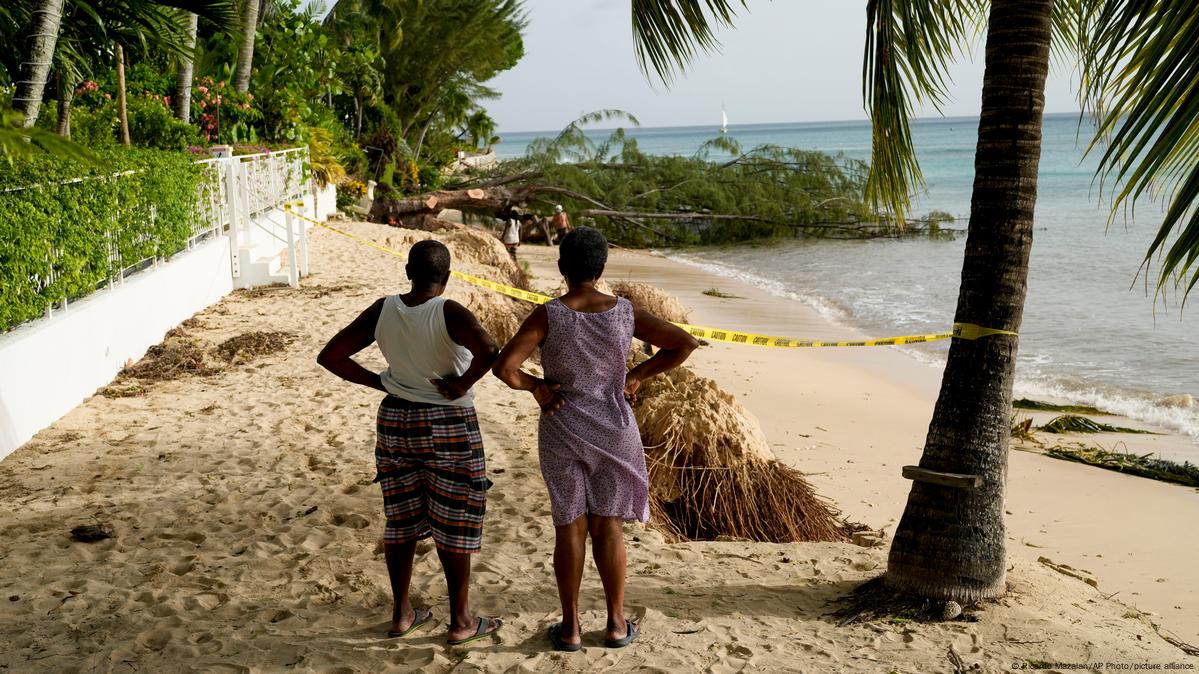 Wind-whipped rain pounded the island for hours
Wind-whipped rain pounded the island for hours

Marco Bello/REUTERS
The Caribbean island nation of Jamaica on Wednesday was facing the brunt of hurricane Beryl, classified as a powerful 'Category 4' storm. So far it has killed at least seven people, flattened numerous homes and destroyed crops on smaller islands as it has churned through the eastern Caribbean.
Wind-whipped rain pounded the island for hours as residents heeded authorities' call to shelter until the storm had passed.
Power issues in Kingston
The US National Hurricane Center (NHC) said Beryl's eyewall was "brushing the south coast of Jamaica." The eyewall is where the most damaging winds and intense rainfall from a storm is found.
Power was knocked out in much of Kingston, the Jamaican capital.
Prime Minister Andrew Holness said on Wednesday afternoon that nearly 500 people were placed in shelters. By evening, he said that Jamaica had not seen the "worst of what could possibly happen."
Several roadways in Jamaica's interior regions were impacted by fallen trees and utility poles, while some communities in the northern section were without electricity, the government's information service reported.
"We can do as much as we can do, as humanly possible, and we leave the rest in the hands of God," Holness said.
Jamaica had announced a state of emergency and was declared a disaster zone for the next seven days, in anticipation.
The US National Hurricane Center (NHC) said Beryl's eyewall was "brushing the south coast of Jamaica." The eyewall is where the most damaging winds and intense rainfall from a storm is found.
Power was knocked out in much of Kingston, the Jamaican capital.
Prime Minister Andrew Holness said on Wednesday afternoon that nearly 500 people were placed in shelters. By evening, he said that Jamaica had not seen the "worst of what could possibly happen."
Several roadways in Jamaica's interior regions were impacted by fallen trees and utility poles, while some communities in the northern section were without electricity, the government's information service reported.
"We can do as much as we can do, as humanly possible, and we leave the rest in the hands of God," Holness said.
Jamaica had announced a state of emergency and was declared a disaster zone for the next seven days, in anticipation.

Several roadways in the interior settlements of Jamaica were impacted by the storm
Image: Marco Bello/REUTERS
Mexico braces for storm
Mexico's Navy patrolled areas like Tulum telling tourists in Spanish and English to prepare for the storm's arrival.
As of late Wednesday, Beryl was forecasted to make landfall in a sparsely populated area of lagoons and mangroves south of Tulum in the early hours of Friday, likely as a weakened Category 2 storm.
That changed when it was expected to cross the Yucatan Peninsula and restrengthen over the warm waters of the Gulf of Mexico, making a second strike on Mexico's northeast coast near the Texas border.
"We will have intense rains and wind gusts" from Thursday, Civil Protection national coordinator Laura Velazquez said, announcing the deployment of hundreds of military personnel, marines and electricity workers in anticipation of damage.
Beryl's widespread destruction
"Beryl has also affected the Cayman Islands and is expected to spin up to even higher speeds by Wednesday night and Thursday," the NHC said in an advisory.
Local authorities have issued hurricane warnings as the rapidly moving hurricane has felled power lines and unleashed flash floods across smaller islands.
Haiti's capital Port-au-Prince — currently in the grip of gang violence and experiencing an ongoing humanitarian crisis — also saw strong winds on Tuesday afternoon.
The new Haitian Prime Minister Garry Conille has warned residents to take precautions and stay alert.
Grenada's PM calls it 'Armageddon-like'
Meanwhile other countries in the Carribean, which have already faced the wrath of Beryl, took stock of the situation.
Ralph Gonsalves, prime minister of St. Vincent and the Grenadines, said in a radio interview that the country's Union Island was "flattened" by Beryl. "Everybody is homeless ... It is going to be a Herculean effort to rebuild."
"90% of homes had been severely damaged or destroyed on one island in the Grenadines archipelago, Union Island," Prime Minister Gonsalves added. He confirmed one death and said more fatalities could be confirmed in the coming days.
The situation is "Armageddon-like," Grenada's Prime Minister Dickon Mitchell said in a video briefing on Tuesday. He stressed that Carriacou and Petite Martinique, two of the three islands that make up the country, were badly affected by the natural disaster.
"There is no power. There is almost complete destruction of homes and buildings," he said, citing impassable roads due to downed power lines and destroyed fuel stations crimping supplies.
Beryl, the first to reach Category 4 in June
Scientists have said that Beryl's arrival has come earlier than is normally the case for such powerful storms. Given how the storm is rapidly strengthening, human-caused climate change might be the culprit, scientists argue.
The weather system is this year's first Atlantic hurricane and the earliest storm on record to reach the highest category on the Saffir-Simpson Scale.
"The Saffir-Simpson Hurricane Wind Scale is a 1 to 5 rating based only on a hurricane's maximum sustained wind speed. This scale does not take into account other potentially deadly hazards such as storm surges, rainfall flooding, and tornadoes" the Central Pacific Hurricane Center reported.
sp, mk/sms, jsi (AP, AFP, dpa, Reuters)
Meanwhile other countries in the Carribean, which have already faced the wrath of Beryl, took stock of the situation.
Ralph Gonsalves, prime minister of St. Vincent and the Grenadines, said in a radio interview that the country's Union Island was "flattened" by Beryl. "Everybody is homeless ... It is going to be a Herculean effort to rebuild."
"90% of homes had been severely damaged or destroyed on one island in the Grenadines archipelago, Union Island," Prime Minister Gonsalves added. He confirmed one death and said more fatalities could be confirmed in the coming days.
The situation is "Armageddon-like," Grenada's Prime Minister Dickon Mitchell said in a video briefing on Tuesday. He stressed that Carriacou and Petite Martinique, two of the three islands that make up the country, were badly affected by the natural disaster.
"There is no power. There is almost complete destruction of homes and buildings," he said, citing impassable roads due to downed power lines and destroyed fuel stations crimping supplies.
Beryl, the first to reach Category 4 in June
Scientists have said that Beryl's arrival has come earlier than is normally the case for such powerful storms. Given how the storm is rapidly strengthening, human-caused climate change might be the culprit, scientists argue.
The weather system is this year's first Atlantic hurricane and the earliest storm on record to reach the highest category on the Saffir-Simpson Scale.
"The Saffir-Simpson Hurricane Wind Scale is a 1 to 5 rating based only on a hurricane's maximum sustained wind speed. This scale does not take into account other potentially deadly hazards such as storm surges, rainfall flooding, and tornadoes" the Central Pacific Hurricane Center reported.
sp, mk/sms, jsi (AP, AFP, dpa, Reuters)
Beryl foreshadows future hurricanes, says UN weather agency
Geneva (AFP) – The World Meteorological Organization, which is tracking Hurricane Beryl's deadly course through the Caribbean, told AFP that more storms with its hallmarks could be expected in the future.
Issued on: 04/07/2024

Geneva (AFP) – The World Meteorological Organization, which is tracking Hurricane Beryl's deadly course through the Caribbean, told AFP that more storms with its hallmarks could be expected in the future.
Issued on: 04/07/2024

Anne-Claire Fontan, scientific officer at the WMO's tropical cyclone programme, said that Beryl signals a very active Atlantic hurricane season in 2024
© Jose ROMERO / NOAA/RAMMB/AFP
The WMO, the United Nations' weather and climate agency, said the record-breaking tropical cyclone intensified rapidly, picking up energy over a warmer Atlantic Ocean and developing into a system with lots of heavy rain.
Anne-Claire Fontan, scientific officer at the WMO's tropical cyclone programme, said that Beryl signals a very active Atlantic hurricane season in 2024.
How did Beryl develop?
"It developed quite quickly in an area which was unusual for this time of year.
"It reached category 4 in June; that was the earliest we've ever seen. It reached category 5 quickly afterwards, so there is a very rapid intensification.
"It reached category 5 very early in the season. It's really very unusual. Hurricane Beryl really broke records.
"For more than a year, there has been a significant positive anomaly of hot water in this area.
"So that's a lot of energy for cyclones, since they feed on the energy of the ocean.
"With such a powerful system, this early in the hurricane season, it suggests... a very active season for 2024."
Where will Beryl go next?
"Beryl will head towards the Yucatan peninsula.
"We are expecting violent winds even if Beryl is expected to decrease in intensity.
"And then it's expected to come out into the Gulf of Mexico.
"There is a little more uncertainty on its trajectory after passing over the Yucatan, recognising that when a hurricane is cut off from... the ocean... it will probably weaken enormously.
"By returning to warm waters, it could intensify. So this is where there is uncertainty... It remains to be seen whether it will be Mexico or Texas (afterwards)."
How will climate change affect hurricanes in future?
"Beryl is an illustration of what we can expect in the future: systems which intensify rapidly with a lot of energy at the ocean level, therefore category 5 systems with a lot of rain.
"A warmer world with global warming does not necessarily mean more tropical cyclones... in terms of frequency.
"(But) we expect a shift towards much more powerful systems -- so with much higher winds.
"Another factor is that in a warmer atmosphere that is capable of retaining more moisture, there will be increased rain associated with tropical cyclones."
What will their impact be?
"The categorisation of hurricanes relies on wind speeds, but the... dangers (are heavily linked to) rain, with all the hazards it brings, in the form of mudslides, flash floods. All of that will also increase.
"The sea level is rising. Tropical cyclones are associated with storm surges... which can cause catastrophic flooding when they make landfall, depending on the layout of the coast.
"So if the storm surges arrive with an already increased sea level, you can clearly see the flooding this can also cause.
"We have a huge population living near the coasts worldwide. So it will clearly be a problem to manage the populations at the coast."
A longer hurricane season?
"When it comes to what will happen to tropical cyclones in a warming world, in terms of a longer season, there is no information at the global level.
"On the other hand, studies have been carried out at the regional level... which show that the season may be extended."
Are systems geared to track such cyclones?
"Trajectory-level tropical cyclone forecasts have improved significantly.
"There is room for improvement in terms of intensity forecasting, and in particular rapid intensification.
"Rapid intensifications are not yet well understood by digital weather forecast models. The scientific community is constantly working on this."
How should vulnerable countries prepare?
"It is very important that all countries do hurricane preparedness, in other words that they sensitise their population to the dangers presented by tropical cyclones, (explaining) how they should react depending on the degree of danger.
"Preparing really means systematically educating the population in advance to know how to act, to prepare their house, then the family; knowing where the shelters are."
© 2024 AFP
The WMO, the United Nations' weather and climate agency, said the record-breaking tropical cyclone intensified rapidly, picking up energy over a warmer Atlantic Ocean and developing into a system with lots of heavy rain.
Anne-Claire Fontan, scientific officer at the WMO's tropical cyclone programme, said that Beryl signals a very active Atlantic hurricane season in 2024.
How did Beryl develop?
"It developed quite quickly in an area which was unusual for this time of year.
"It reached category 4 in June; that was the earliest we've ever seen. It reached category 5 quickly afterwards, so there is a very rapid intensification.
"It reached category 5 very early in the season. It's really very unusual. Hurricane Beryl really broke records.
"For more than a year, there has been a significant positive anomaly of hot water in this area.
"So that's a lot of energy for cyclones, since they feed on the energy of the ocean.
"With such a powerful system, this early in the hurricane season, it suggests... a very active season for 2024."
Where will Beryl go next?
"Beryl will head towards the Yucatan peninsula.
"We are expecting violent winds even if Beryl is expected to decrease in intensity.
"And then it's expected to come out into the Gulf of Mexico.
"There is a little more uncertainty on its trajectory after passing over the Yucatan, recognising that when a hurricane is cut off from... the ocean... it will probably weaken enormously.
"By returning to warm waters, it could intensify. So this is where there is uncertainty... It remains to be seen whether it will be Mexico or Texas (afterwards)."
How will climate change affect hurricanes in future?
"Beryl is an illustration of what we can expect in the future: systems which intensify rapidly with a lot of energy at the ocean level, therefore category 5 systems with a lot of rain.
"A warmer world with global warming does not necessarily mean more tropical cyclones... in terms of frequency.
"(But) we expect a shift towards much more powerful systems -- so with much higher winds.
"Another factor is that in a warmer atmosphere that is capable of retaining more moisture, there will be increased rain associated with tropical cyclones."
What will their impact be?
"The categorisation of hurricanes relies on wind speeds, but the... dangers (are heavily linked to) rain, with all the hazards it brings, in the form of mudslides, flash floods. All of that will also increase.
"The sea level is rising. Tropical cyclones are associated with storm surges... which can cause catastrophic flooding when they make landfall, depending on the layout of the coast.
"So if the storm surges arrive with an already increased sea level, you can clearly see the flooding this can also cause.
"We have a huge population living near the coasts worldwide. So it will clearly be a problem to manage the populations at the coast."
A longer hurricane season?
"When it comes to what will happen to tropical cyclones in a warming world, in terms of a longer season, there is no information at the global level.
"On the other hand, studies have been carried out at the regional level... which show that the season may be extended."
Are systems geared to track such cyclones?
"Trajectory-level tropical cyclone forecasts have improved significantly.
"There is room for improvement in terms of intensity forecasting, and in particular rapid intensification.
"Rapid intensifications are not yet well understood by digital weather forecast models. The scientific community is constantly working on this."
How should vulnerable countries prepare?
"It is very important that all countries do hurricane preparedness, in other words that they sensitise their population to the dangers presented by tropical cyclones, (explaining) how they should react depending on the degree of danger.
"Preparing really means systematically educating the population in advance to know how to act, to prepare their house, then the family; knowing where the shelters are."
© 2024 AFP

